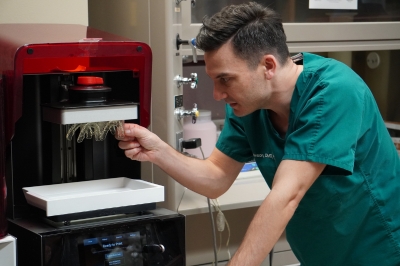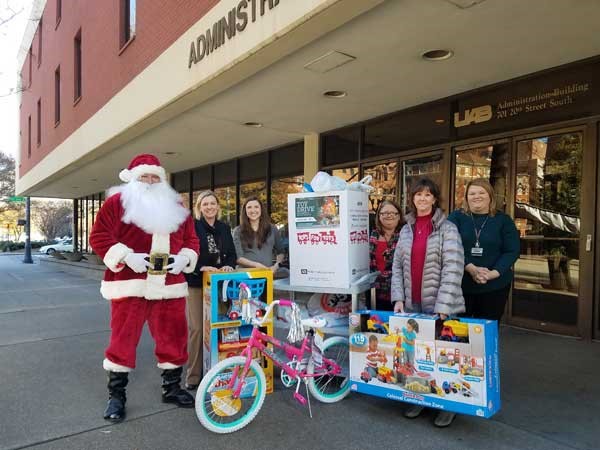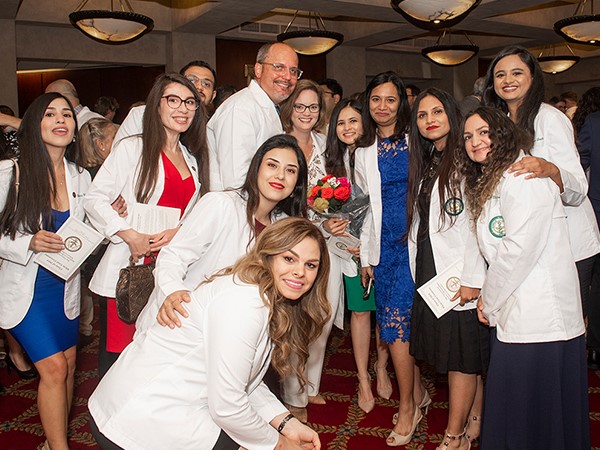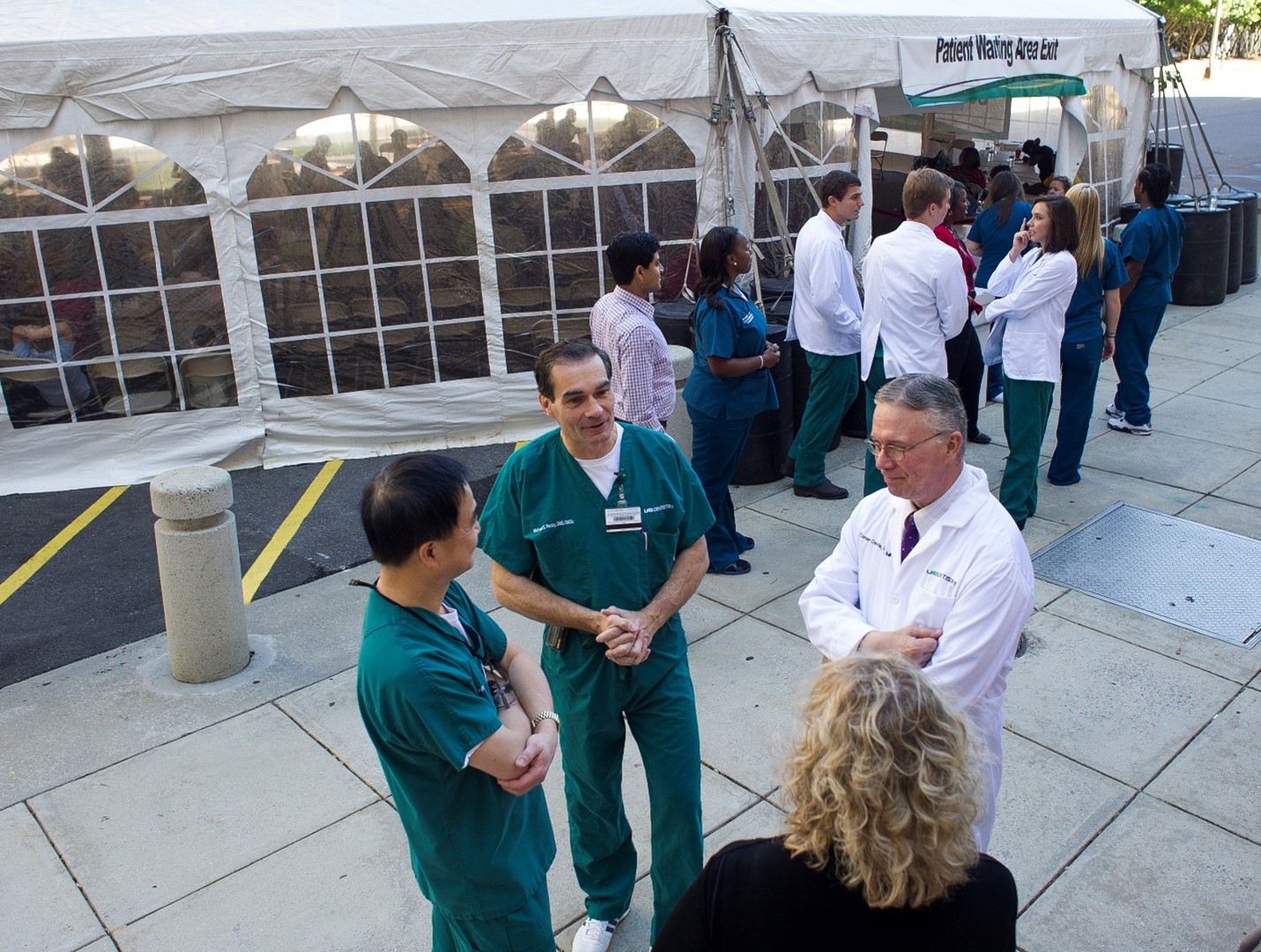The 2010s was a decade of significant technological advancements within the University of Alabama at Birmingham School of Dentistry, from 3D oral scanners to zirconia crowns. But through it all, the SOD remained primarily about people helping people, be it faculty working with students, or the students in turn caring for patients.
 Here is a quick look at a few of the events, advancements and – most importantly – the people who made a mark on the UAB School of Dentistry through its seventh full decade of existence:
Here is a quick look at a few of the events, advancements and – most importantly – the people who made a mark on the UAB School of Dentistry through its seventh full decade of existence:
Digital Dentistry: Data bytes truly became part of the world of dental bites in the 2010s. Current SOD associate professor Nate Lawson, D.M.D., M.A., Ph.D., says technology was making a major breakthrough in dentistry in the years near his graduation from the SOD in 2012.
“Digital dentistry really got to be more prominent since I was in school,” Lawson says. “Instead of taking the traditional gooey impressions in a person’s mouth, we started to get 3D scanners to scan the mouth in order to make crowns, bridges and mouth guards. There was just a lot of digital integration in the dental school at that time.”
“And with new digital scanners, it allowed us to incorporate new technology such as 3D printers, and 3D x-rays into treatment. That’s been a big transition as far as the way we do dentistry. We also saw dental ceramic crowns start to phase out metal-based crowns. You don’t see crowns made out of metals much anymore. We did a lot of pioneering research at UAB for the zirconia ceramics that are currently being used.”
 SOD Staff Council: When Nancy Parsons began working at the School of Dentistry as an office associate in 2011 after spending 14 years at a much smaller college, she admits she initially was “overwhelmed at the enormity of UAB.” But that feeling disappeared within days as multiple members of the School of Dentistry Staff Council stopped by to welcome Parsons and let her know she could contact them if there was something they could do to help her get acclimated.
SOD Staff Council: When Nancy Parsons began working at the School of Dentistry as an office associate in 2011 after spending 14 years at a much smaller college, she admits she initially was “overwhelmed at the enormity of UAB.” But that feeling disappeared within days as multiple members of the School of Dentistry Staff Council stopped by to welcome Parsons and let her know she could contact them if there was something they could do to help her get acclimated.
“That really struck me. It made me feel included,” says Parsons, who was so impressed with the organization that she has since served as both Staff Council chair and president. “I was able to meet other staff members from all across the School of Dentistry, which creates a sense of family.”
“Staff Council has grown since then. It’s evolved from just a welcoming committee to an organization that’s here to represent our staff. ‘Tell us what’s going on with you, and how we can help you.’ That lets our staff know they are appreciated for all their hard work.”
 International Dentist Program: Under the direction of Sonya Tidwell Mitchell, D.M.D., M.S.H.A., the IDP debuted in 2015 with an initial group of 10 foreign-trained dental students. The annual incoming IDP class has more than doubled since then, exposing the international students to dental methods and technologies available in the United States, while also exposing the often younger U.S. students to more experienced peers from different cultural backgrounds. The program is now under the direction of Stephen Mitchell, D.M.D., M.S.
International Dentist Program: Under the direction of Sonya Tidwell Mitchell, D.M.D., M.S.H.A., the IDP debuted in 2015 with an initial group of 10 foreign-trained dental students. The annual incoming IDP class has more than doubled since then, exposing the international students to dental methods and technologies available in the United States, while also exposing the often younger U.S. students to more experienced peers from different cultural backgrounds. The program is now under the direction of Stephen Mitchell, D.M.D., M.S.
Elyse Dengler, D.M.D., a 2018 SOD graduate who returned to the school in 2023 as an assistant professor, says she loved interacting with the IDP students when she was here as a student. She said it helped the traditional DMD make new friends learn not only from their clinical experience, but about their cultures and life experiences.
National Dental Practice-Based Research Network: In 2012, the SOD received a seven-year, $66.8 million grant from the National Institute of Dental and Craniofacial Research to consolidate the NIDCR’s three regional research networks into a single, nationally coordinated effort, to be housed in the Department of Clinical and Community Sciences under the leadership of Gregg Gilbert, D.D.S, M.B.A.
“The National Dental PBRN is amazing,” says Parsons, who worked with Gilbert and SOD business officer Twanda Walker during the early years of the project. “The number of studies that are out in the community has grown nationwide because of the PBRN, and there are new treatment plans to come out of this research.”
“Dr. Gilbert is wonderful in engaging people to participate in these studies. He’s an incredible leader. It’s all about encouraging community involvement and getting information about dental health out into the community.”
 UAB Dentistry Cares Community Day: Speaking of community, the School of Dentistry hosted its first UAB Dentistry Cares Community Day charity event, treating more than 350 people. The event was coordinated by Conan Davis, D.M.D., then the assistant dean of community collaborations and public health, with the help of Perng-Ru Liu, D.M.D., D.D.S., M.S., who was chair of the Department of Restorative Sciences. The service provided by event, which was held annually until it was interrupted by the pandemic, has become incorporated into the school’s student rotations.
UAB Dentistry Cares Community Day: Speaking of community, the School of Dentistry hosted its first UAB Dentistry Cares Community Day charity event, treating more than 350 people. The event was coordinated by Conan Davis, D.M.D., then the assistant dean of community collaborations and public health, with the help of Perng-Ru Liu, D.M.D., D.D.S., M.S., who was chair of the Department of Restorative Sciences. The service provided by event, which was held annually until it was interrupted by the pandemic, has become incorporated into the school’s student rotations.
The Power of People: The School of Dentistry has long valued engagement among its faculty, staff and students. This led to the creation, in 2013 under Dean Michael Reddy, of the Dentistry Cultural Advancement Team (DCAT). This program allowed team members to gather over a meal and simply get to know each other a little better. One of the last DCAT programs was held in January 2019 as part of UAB Community Month, having been extended under Interim Dean Michelle Robinson to include the greater UAB community.
Alumni engagement was also a focus throughout the decade. The school’s annual Alumni Weekend continued to grow, year over year – as did alumni and donor support for the school through the Campaign for UAB and other initiatives.
And, of course, there are numerous faculty members who left a lasting impact on SOD students. Dengler, for example, credits associate professor Raquel Mazer, D.M.D., M.S., M.P.H., for helping her make it through her early days of clinic duty.
“Dr. Mazer was an important part of my education,” Dengler says. “She was my bay leader in the clinic. Entering clinic for the first time and being nervous, she really provided a calming presence and reassurance, and made me feel like I could do it. That was really helpful. I was fortunate to have her there by my side when I first started in the clinic.”
“The people of UAB are what make it so great. When I came back this year, it felt like coming home. There have been a lot of things that have changed. Faculty members have come and gone. But the heart of UAB is still the same. It’s people who care about people and want to help people. That’s what dentistry is, helping and supporting people, and that’s the best thing about the UAB School of Dentistry.”
It has been that way for 75 years … and counting.